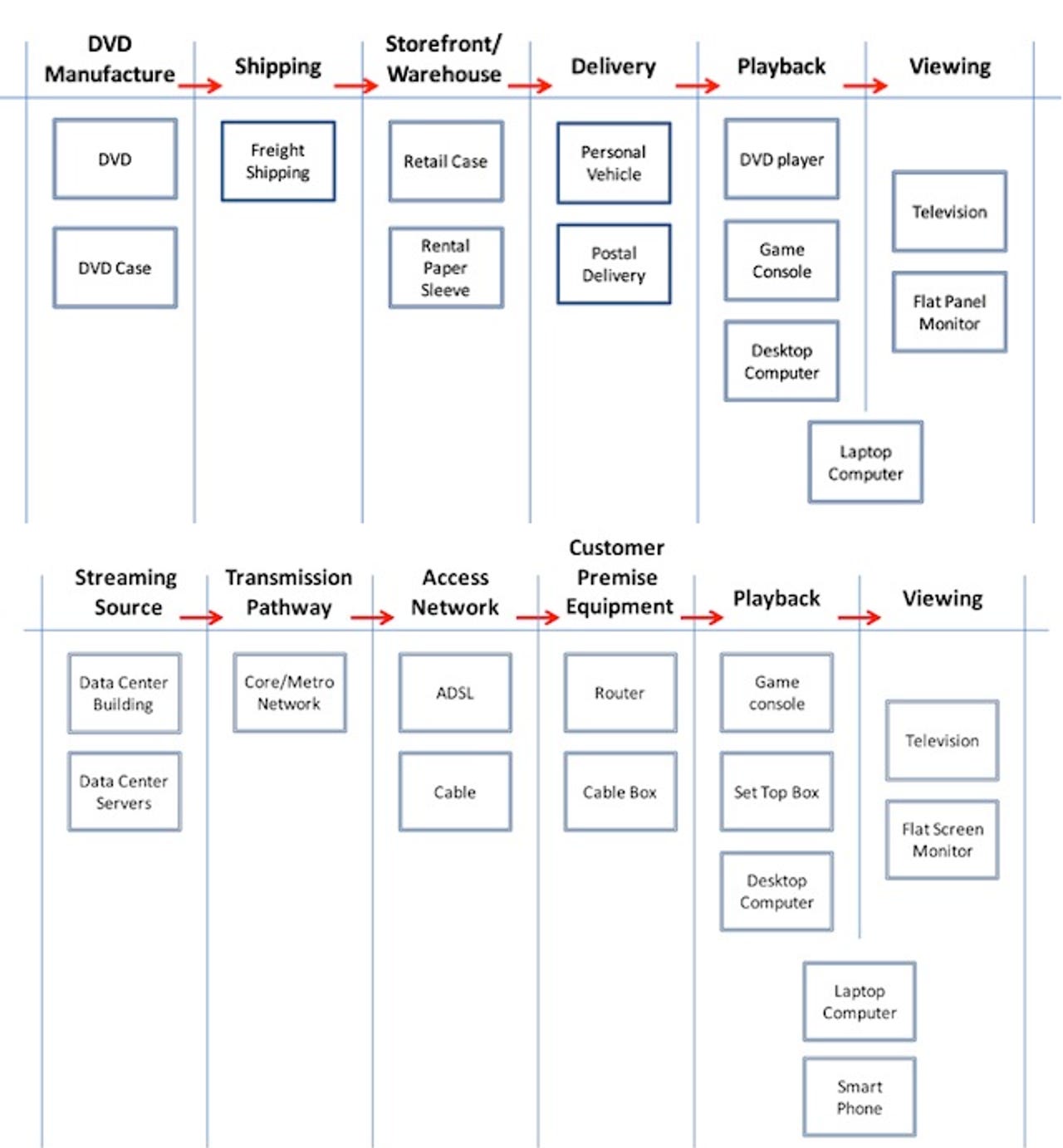Energy impact of video streaming vs. DVD watching

In a single year, Americans watched 20.4 billion hours of movies and television either on DVDs or online, all the while emitting about 10.5 billion kilograms of CO2 equivalent. A lot of that is due to the manufacturing, packaging, and shipping of discs. But how much CO2 was emitted when you binge-watched House of Cards on Netflix or Game of Thrones on HBO GO?
According to a new study of energy and emissions, video streaming is more efficient than traditional DVD methods -- with data transmission being the most energy-intensive part.
Using an open-source model called Cloud Energy and Emissions Research (CLEER) Model, a team led by Arman Shehabi from Lawrence Berkeley National Laboratory analyzed the energy usage and greenhouse gas emissions associated with home movie and television viewing for 2011.
They took a life-cycle approach to assess traditional DVDs and video streaming. Here's how they compare:
- Both activities consume about the same amount of energy if DVDs were mailed.
- But energy consumption increased significantly if consumers had to drive to the store to buy or rent and return the movie or television series, or if the postal service had to deliver the discs.
- Streaming benefits from removing the need for inefficient DVD players, but those gains are canceled out by the addition of network energy.
That year, Americans streamed 3.2 billion hours of content, consuming 25 petajoules of energy -- or enough to power 175,000 U.S. households for one year. At the same time, viewers emitted 1.3 billion kilograms of CO2, or about 420 grams for each hour of content viewed online. More than half of that energy usage went to (and emissions came from) transmitting data across the internet.
Based on 2011 numbers, a complete shift to video streaming would cut total emissions from 10.5 billion kilograms down to about 8.6 billion kilograms. That savings is equivalent to the electricity demand of 200,000 U.S. households a year.
"There's going to be an explosion in the amount of movie streaming," Shehabi says in a news release. "What's happened between 2011 and now is like earth and sky." And to help illustrate why, here's a system diagram of DVD viewing, followed by the system diagram of streaming.

"On top of so many more videos being streamed, the videos themselves are getting more complex and requiring faster streaming rates," Shehabi says. "We want to highlight that greater efficiency of the network will be needed to offset this huge demand in bandwidth."
As videos are streamed, they pass through different parts of the network. Each part is often owned by a different company, which keep their operational details confidential. "Network infrastructure is going to greatly expand in the near future to meet the upcoming demand in video steaming," Shehabi adds. "Let's get more data out there on how much electricity is actually being used and make sure that energy efficiency is a priority in this expansion."
The work was published in Environmental Research Letters.
[Berkeley Lab via Science]
Images: Arman Shehabi et al., 2014 Environ. Res. Lett. 9 054007 & thumbnail image by Austen Squarepants via Flickr
This post was originally published on Smartplanet.com